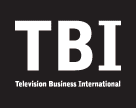How to generate AI models for content marketing workflows

AI models have become a central tool for modern content marketing. More organizations now rely on complex algorithms to enhance content creation and streamline creative workflows. Generative AI is reshaping daily marketing tasks, from brainstorming copy ideas to designing ad creatives that align with brand compliance standards. This article offers a practical guide to building and leveraging AI-driven solutions tailored to varied marketing objectives, ensuring the process remains approachable and achievable for all marketing professionals.
Understanding the benefits of generative AI in content marketing
AI-generated content delivers significant advantages over manual methods. These advanced tools analyze vast datasets to spot emerging trends, uncover effective strategies, and tailor messages for different audience segments. By integrating such models, marketing campaigns increase their relevance, enhancing engagement and driving conversions.
With generative AI, producing and delivering marketing materials becomes a dynamic, data-driven experience. The automation of idea generation and the creation of visually engaging assets save valuable time while upholding high creative standards. This level of marketing automation supports scalability, allowing teams to achieve more without overextending resources.
Foundations for building effective AI models for marketing
Developing AI models that boost content marketing success begins with a clear understanding of the target audience and campaign objectives. Feeding these models with high-quality training data ensures outputs remain relevant and consistent with brand guidelines. These foundational steps are essential for robust content creation and seamless process automation.
AI models excel when provided with regular feedback. Marketers who supply example content, adjust model parameters, and review AI-generated outputs consistently foster ongoing improvements. Regular retraining and evaluation drive greater accuracy in personalization efforts and ensure continued alignment with evolving audience preferences. For marketing professionals seeking to access dedicated resources, they might visit https://bestcreator.com/ for tools related to creating or fine-tuning their own models.
Step-by-step workflow for generating AI models
Successful marketers establish structured protocols to streamline the implementation of generative AI systems. Careful planning and methodical execution are essential for achieving both efficiency and alignment with organizational goals.
Identifying needs and objectives
The first step involves pinpointing specific business challenges or opportunities. Some teams may prioritize automated product descriptions, while others focus on rapid creation of ad creatives or personalized email campaigns. Defining these objectives shapes the entire workflow from beginning to end.
Clear use case selection clarifies model requirements, helps allocate resources efficiently, and sets realistic expectations for outcomes. Well-defined objectives also determine what data is collected and which metrics guide future optimizations.
Curating and preparing training data
Relevant, diverse datasets are the foundation of successful AI models. Marketers gather existing content assets—blog posts, images, brand guidelines—to serve as training material for generative AI algorithms. For image generation tasks, visual assets should be organized by categories and tags to produce more controlled outputs.
Quality and consistency must guide dataset preparation. Attention to detail—such as verifying grammar, branding elements, and tone—ensures strong brand compliance at every stage of development.
Selecting and customizing model architectures
Once objectives and data are established, the next step is choosing the appropriate AI architecture. Options may include large language models for copywriting or image-centric networks for visual content. Customizing these architectures with proprietary datasets ensures outputs reflect unique branding or industry-specific context.
Fine-tuning requires regular testing of generated samples, adjusting hyperparameters, and updating training materials as campaigns evolve. This hands-on process encourages ongoing creativity and supports process automation across multiple channels.
Testing and validation before deployment
Pilot phases involve testing new models against benchmark scenarios, such as sample ad creatives or targeted social media copy. Comparing results to legacy methods highlights efficiency gains and uncovers areas for improvement.
Continuous feedback loops between team members and AI models reinforce learning while identifying inconsistencies before full-scale deployment. Careful measurement during this phase builds trust among stakeholders who may be cautious about adopting automation for creative processes.
Practical applications: using AI-generated content in marketing operations
Deploying new models provides a flexible toolkit for marketing teams. Routine content creation tasks can be automated, freeing up time for strategic planning and innovation. Many organizations experiment in phases, beginning with smaller projects to refine approaches and demonstrate tangible results to stakeholders.
A broad range of applications includes personalized newsletters, dynamic web experiences, and responsive ad creatives—all made possible through streamlined process automation. Scalability remains a primary advantage, enabling brands to launch global campaigns quickly while honoring local nuances and compliance requirements.
Tips for successful integration and ongoing optimization
Introducing generative AI into content marketing is only the beginning. Continuous refinement ensures relevance, creative uniqueness, and strict adherence to brand compliance. Teams should expect to revisit datasets and model configurations regularly as business goals evolve or audience expectations shift.
Aligning AI capabilities with broader marketing automation technologies amplifies impact. Integrated tools enable rapid transitions between copywriting, image generation, analytics, and scheduling, reducing friction in the creative cycle. Enhanced collaboration among team members also makes room for more strategic projects.
- Establish clear brand voice documentation for effective training
- Schedule quarterly audits of model performance and creative output
- Designate cross-functional teams to review AI-generated content
- Experiment with new use cases through controlled pilot projects
- Encourage regular skills training sessions focused on emerging AI techniques
Ensuring ethical standards and brand compliance in AI-driven workflows
Responsible content marketing requires human oversight at every stage. Teams develop policies for transparency, rigorous testing, and model explainability to ensure fair practices. Regular audits help prevent off-brand messaging, unintentional bias, or errors that could harm reputation.
Brand compliance checks—both manual and automated—ensure all generated content meets internal and legal standards before publication. Incorporating feedback into continuous development cycles strengthens results and builds trust throughout the organization.









